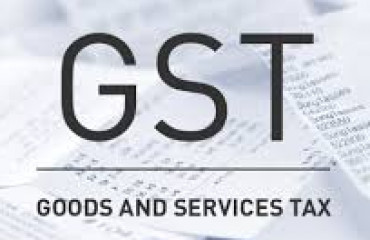
These are tumultuous times, with the resurgence of farmer unrest. Earlier in February, there was a state rebellion about unfair fiscal treatment by the Union government which was more worrying, and not just because the chief ministers of aggrieved states staged a street protest in Delhi.
These are tumultuous times, with the resurgence of farmer unrest. Earlier in February, there was a state rebellion about unfair fiscal treatment by the Union government which was more worrying, and not just because the chief ministers of aggrieved states staged a street protest in Delhi.
All states in India get a percentage share of gross taxes collected by the Centre. The aggregate share, as well as the share of each state, is prescribed by a succession of Finance Commissions (FCs) for five years at a time. Once accepted in Parliament, each state's tax share becomes a statutory obligation, both the percentage payable as well as the dates on which payments fall due. I have often spoken of this statutory provision as being the Fevicol that has held the Indian federation together.
We are presently in the period 2021-22 to 2025-26 covered by the 15th FC, which set states' aggregate share at 41% of gross tax collections at the Centre (net of tax collection costs). Let us look at 2022-23 (FY23), for which we have audited final numbers (the current year FY24 figures are subject to further revision). When the FC provision is reconfigured after deducting costs of collection in FY23, the recalculated FC prescription moves down just a notch to 40.8 % of reported gross tax revenue of the Centre.
It is better to adjust the target in that manner, so that the reported gross tax revenue can be directly used thereafter to compare the percentage states actually got with the adjusted target. In FY23, states received in aggregate ₹9.5 trillion as their tax share, which was 31.1% of the reported gross tax revenue of the Centre, well below the adjusted target of 40.8 %.
The reason for that shortfall is that Central cesses and surcharges (education, health, familiar to all taxpayers), superimposed on the basic tax structure are excluded from the shareable revenue base because they are supposedly temporary add-ons. States accuse the Centre of using them as a stratagem to reduce the statutory payment to states.
An important caveat post the Goods and Services Tax (GST) is that a GST cess is levied and collected by the Centre, but only to pay compensation to those states which failed to reach a required revenue level during the first five years, till end-June 2022. The GST cess continues to be levied to cover deficits on compensation due to those states (my column of 4 August 2023; tinyurl.com/2wsdpjvk). So some part of the 'denied distance' is on account of a cess fully paid out to (some) states. If states' share is re-computed as a percentage of gross tax revenue of the Centre minus the GST cess, it goes up to 32.5% in FY23, still 8.3% below the FC target of 40.8 %.
In addition to the tax share (the dominant component), FCs also prescribe absolute statutory grants, unconnected to Central tax revenue. If we add grant payouts in FY23 to the tax share, states received a statutory flow at 38.4% of gross tax revenue (minus the GST cess).
Then there are non-statutory flows from the Centre to states through Centrally Sponsored Schemes (with co-payment by states), and other Central schemes. Although non-statutory, these still carry funding commitments, but there can be many grounds for state grievances here, including processing delays and imposition of politically fraught conditionalities. Adding these on, states' share climbs up to 57.8% of gross Central tax revenue (minus the GST cess). In addition, there are other flows, such as a 50-year interest-free loan with bullet repayment to states for capital expenditure, and externally funded grants routed through the Centre.
Adding up all the pieces, states received a total flow of ₹18 trillion in FY23. Despite that, the kernel of the present dissatisfaction has to do with the statutory tax share working out to 8.3 percentage points below the target calculated here of 40.8%, even after removing the GST cess from gross tax revenue (because it is shared, but differently).
The 16th FC is in place. Perhaps it could incentivize the Centre to merge cesses and surcharges into the basic tax structure (the GST cess has to be phased out in any case) in exchange for a lower aggregate share for states. It is only since FY16 that states' share got dramatically ramped up from 32% to 42% on the recommendation of the 14th FC (now at 41% with Jammu and Kashmir transferred from state to Union territory status). There is a lesson to be learnt from the present effective tax share languishing at 32.5%, near the nominal level at which it was pegged before the ramp-up.
Some states like Karnataka have individual grievances about their percentage of the aggregate having fallen over time. That is because the distribution formula for the tax share compensates for inter-state disparities. Tax revenues collected from states like Karnataka and Maharashtra are generated from economic activity all over the country, but paid from those jurisdictions because of corporate headquarters and high-income individuals located there. In the end, all states have a stake in belonging to the Indian Union, with the free movement of people and goods that it affords across a vast market.
